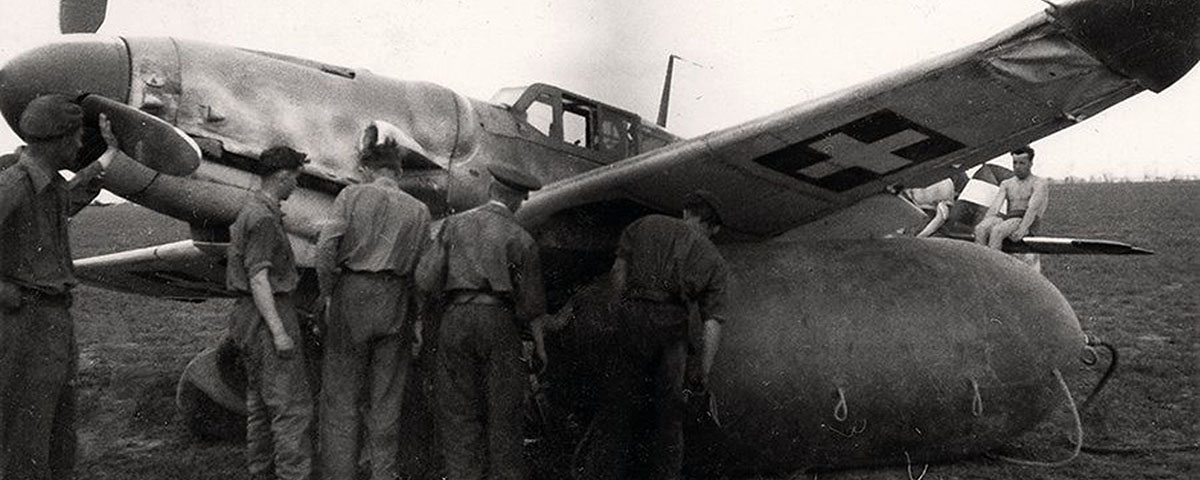Dear Mr. Guttman,
I wrote about the Avia S-199’s role in Israel’s war of independence. I’m presently putting together a follow-on article about this troubled fighter, which, as you know, was derived from the Me-109. Hence my question(s): Do you have any information or numbers about the Luftwaffe record of take off/landing accidents with the Me-109? Why do you suppose the Israeli experience with the Czech S-199 was so calamitous? Was it pilot inexperience in type or the desert environment or a flawed product from the Czechs?
Any thoughts you may have on this subject will be sincerely appreciated.
With thanks,
Robert Gandt
???
Dear Mr. Gandt,
I don’t have precise information on how many Messerschmitt 109s cracked up due to its narrow landing gear combined with the torque of its engine, but former Jagdwaffe commander Adolf Galland stated his belief that failed landings due to the undercarriage configuration accounted for 3 percent of all 109 losses from 1935 to 1945. Luftwaffe ace Gustav Roedel said that if the rudder cable was damaged or even if it was not kept very tight, take off could end up in a ground loop. Russian front ace and wing leader Dietrich Hrabak added that once the Germans were retreating westward, his pilots were cracking up Me 109Gs as they landed on hard asphalt surfaces because they were too used to grass airfields.
For the most part Luftwaffe pilots learned from experience just how much rudder to apply to compensate for the propeller’s torque during takeoff and landing. That rudder compensation was taxed to the limit, however, in the Avia S-199 Mezec (“mule”), which was essentially the airframe of the Me 109G-14 that Avia had been license-building for the Luftwaffe, adapted to accommodate a Junkers Jumo 211F engine, which was also being built in the resurrected Czechoslovakia, whereas the Daimler-Benz DB 605 was not. Combined with a broad, paddle-bladed propeller, the Jumo was heavier and produced more torque, yet was less powerful than the DB 605. The result was a serious imbalance to the winning formula of Me 109 airframe and DB 605 powerplant—something with more torque, yet inferior performance.
Lou Lenart, a former U.S. Marine Corps Vought F4U pilot volunteering for the Israeli air arm, described his impression of the Czech-built Messer (“knife” in German, or Sakin, as the Israelis called it in Hebrew):
“It’s probably the worst airplane that I have ever had the misfortune to fly. It was a different engine, different propeller, fire through the propeller, the cannon never worked, the synchronization often did not work, there were no self-sealing tanks, just one section of the seat was bullet proof and it was underpowered. Can you visualize a fighter plane without a rudder trim? There was no rudder trim on it! So, you had that monstrous propeller and you had a torque and no rudder trim.”
Lenart quickly learned that the only way to take off in an S-199 was to get the tail up as quickly as possible (so one could see ahead) and apply nothing less than “full right rudder.”
The Czechs who sold the S-199 to the Israelis for an exorbitant $44,600 per plane (plus $6,890 for equipment, $120,229 for ammunition and $10,000 for the ferry flight) recommended that the Israelis only take off from grass surfaces, warned them that it was difficult to maintain a straight heading on takeoff, landing, clinging or diving, and that it was capable of only a slow 200 mph. The Israelis worked miracles with their Sakins, but at Ezer Weizman’s vehement recommendation they phased them out as quickly as possible once other fighters (Supermarine Spitfires and North American P-51D Mustangs) became available.
Sincerely,

Jon Guttman
Research Director
World History
www.historynet.com
More Questions at Ask Mr. History
Don’t miss the next Ask Mr. History question! To receive notification whenever any new item is published on HistoryNet, just scroll down the column on the right and sign up for our RSS feed.





